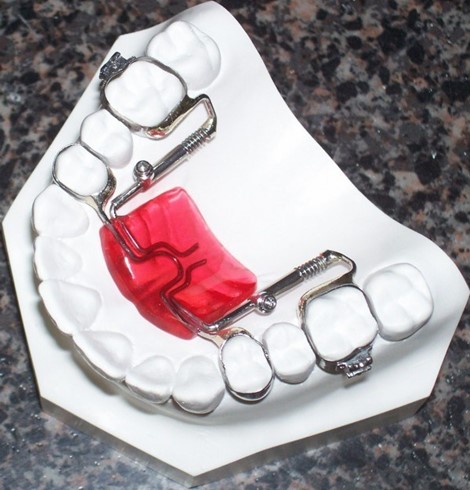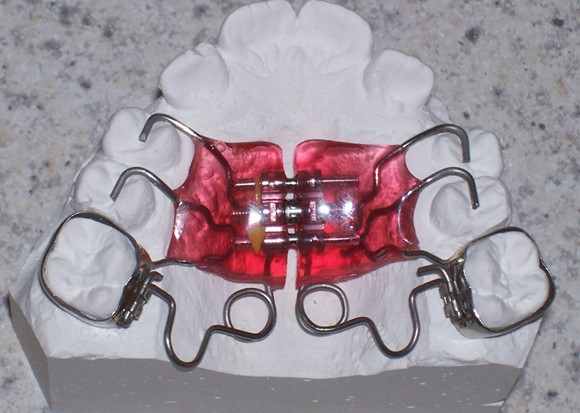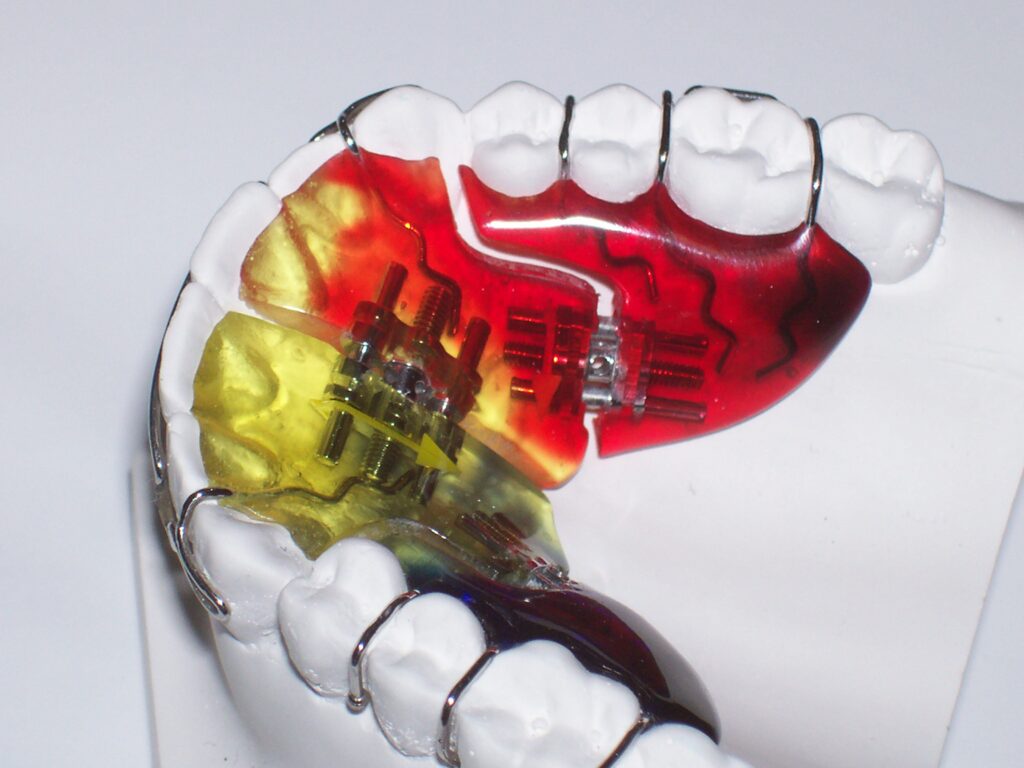Used to gain space along the dental arch and achieve proper molar relationship. Molar distalizing appliances can be used unilaterally or bilaterally with each side being individually adjustable. Mid-line expansion screws can also be incorporated into these designs
Distal Jet

Typically anchored to bands on the first bicuspids, a large nance button stabilizes this appliance. Open coil NiTi springs provide consistent force while rod & tube elements direct predictable movement that is not prone to tipping of the molars. Expansion screw can be incorporated into acrylic button to add mid-line expansion as well
Pendulum Family

A nance button anchored to premolars with rests provides the stability for TMA springs that sweep the molars distally, each spring fits into a lingual sheath on the molar bands so that they may be removed and adjusted easily.
The Pendulum is a family of appliances each with a slightly different characteristic
- Pendulum: Stabilizing button with rests & springs
- Pendex: Pendulum + mid-line expansion screw
- T-Rex: Pendex + stabilizing wires soldered from acrylic button to band, so that mid-line expansion can occur first in sequence & then wire can be cut freeing molars to move independently
Sagittal

If you need a removable distalizing appliance. Sagittal appliances regain lost arch length in an anterior and/or posterior direction. Adams clasps are on the first bicuspids and first molars. Maxillary sagittals position twin expansion screws at the mesial of the first molar, the appliance is cut into 3 sections to allow for expansion. The mandibular appliance positions the screws in the cuspid/bicuspid area. Springs may also be incorporated to move the canines into position as space becomes available. Also acrylic coverage on the posterior teeth may be incorporated to relieve maxillary / mandibular occlusal contact during treatment.
